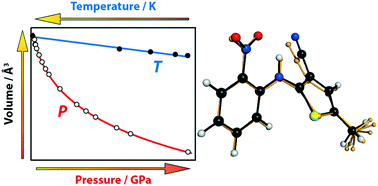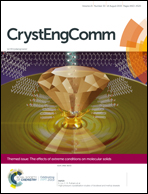Structural behaviour of OP-ROY at extreme conditions†
Abstract
The effects of high pressure and low temperature have been explored on the ‘orange-plate’ (OP) form of the highly-polymorphic 5-methyl-2-[(2-nitrophenyl)amino]-3-thiophenecarbonitrile molecular crystal structures. Neutron powder and single-crystal diffraction measured up to 9.3 GPa and 40 K, respectively, show that the crystal structure is robust, retaining P21/n symmetry over the pressure and temperature range studied, even though it is revealed to be quite soft, having a bulk modulus of 4.3(3) GPa. Intermolecular and lattice energies become progressively less favourable with pressure, relative to the thermodynamically-stable ‘yellow’ (Y, P21/n) form, showing that the kinetic barriers to transformation, stabilising the material, persist from ambient to extreme conditions.

- This article is part of the themed collection: The effects of extreme conditions on molecular solids


 Please wait while we load your content...
Please wait while we load your content...